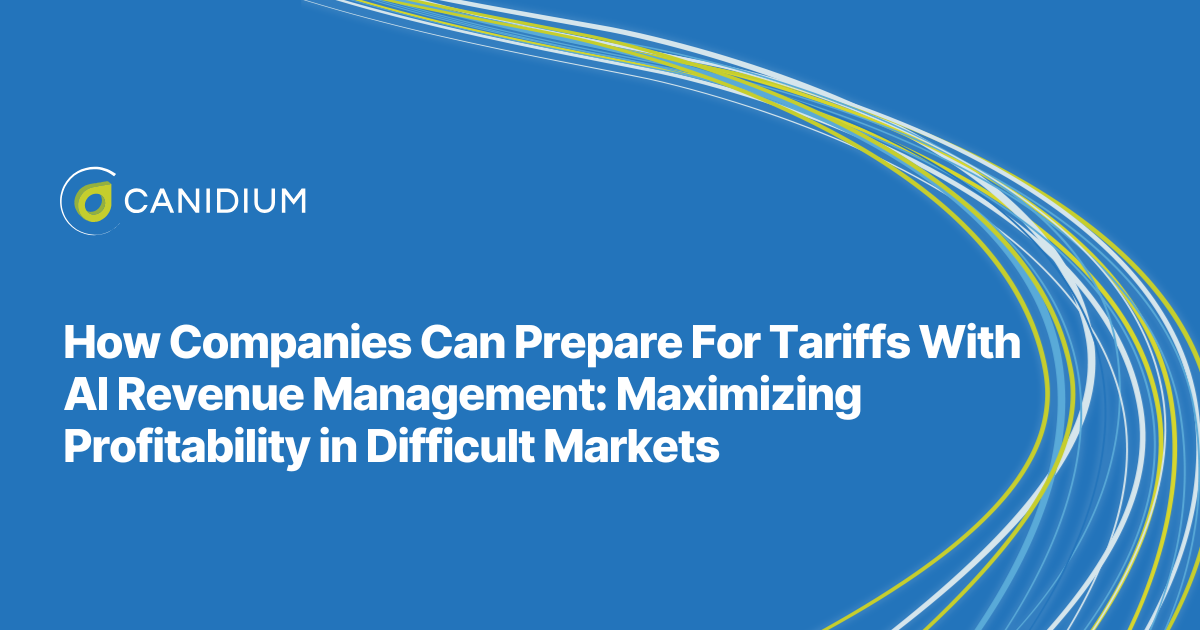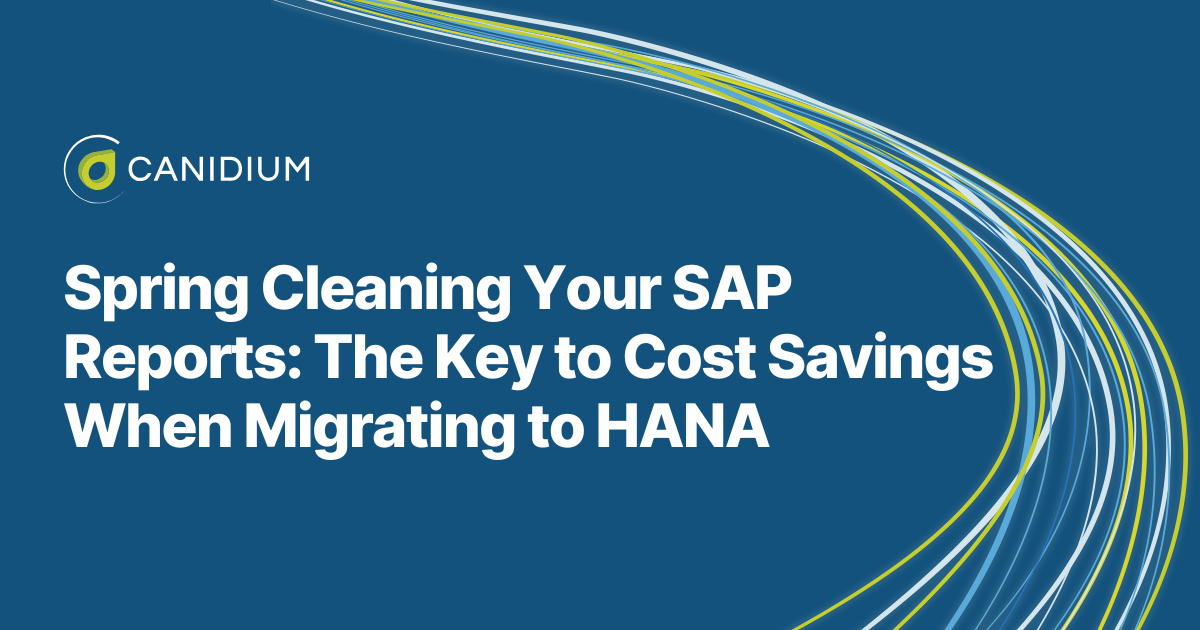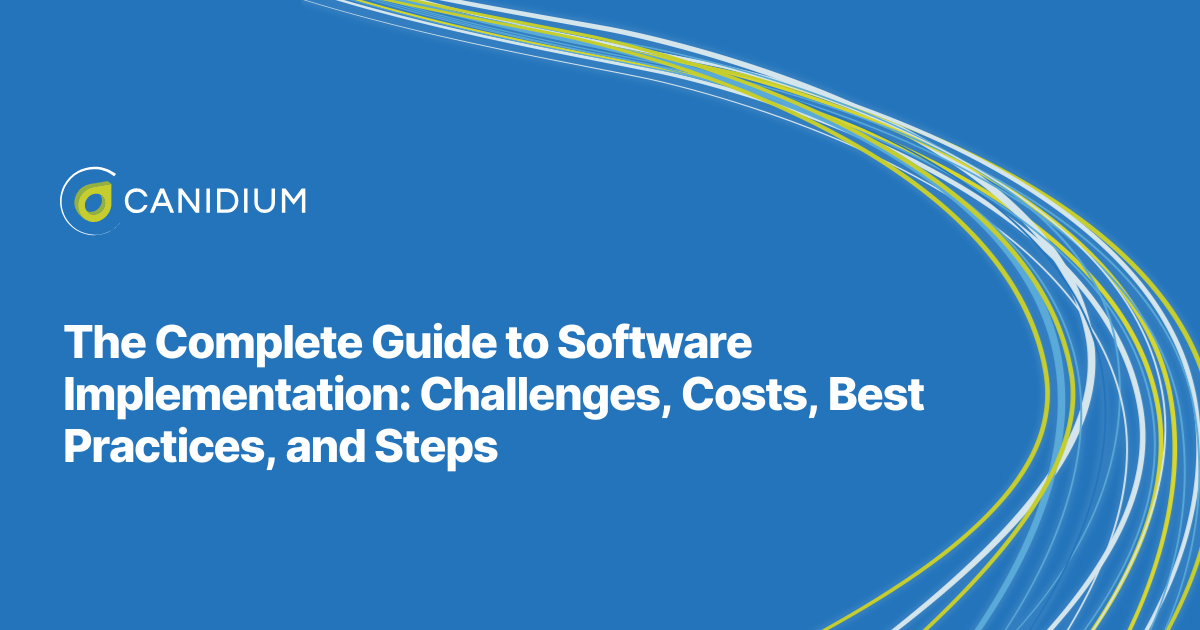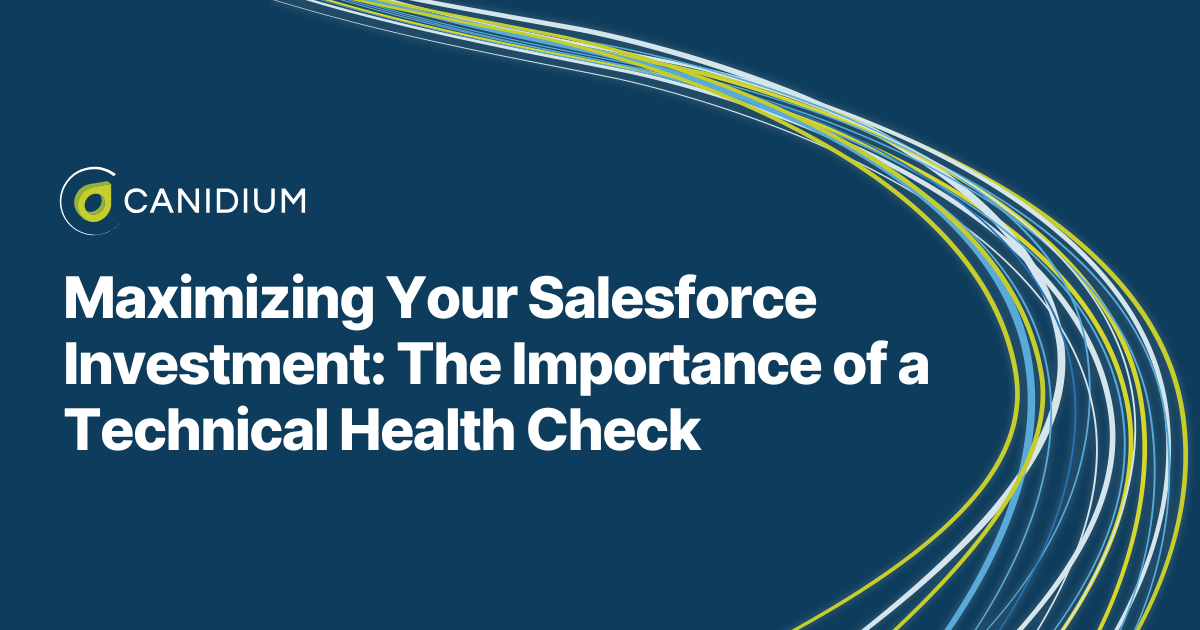In 2025, tariffs are already proving to have a disruptive effect on global markets. The impact estimates on the table are highly significant for the most directly affected. For example, one hypothetical suggests that for manufacturers with typical profit margins between 10% and 15%, the impact of a 10% tariff on critical raw materials could reduce profitability by as much as 50% to 75%.
The odds are that your company will be impacted by tariffs. However, that does not mean you must accept margin losses or revenue downturns. If you shore up your pricing infrastructure, prepare for changing market conditions, and set your organization up for success in a tariff economy, you can overcome these challenging conditions.
One of the most effective ways to overcome economic volatility is better pricing processes and tools. More specifically, recent innovations in AI revenue management tools have opened up new possibilities for advanced pricing strategies that can grow profits even in bumpy economic conditions.
To help you prepare for tariffs, here’s a guide to leveraging AI-powered revenue management systems and machine learning tools to expand your revenue potential in 2025.
The Challenges Pricing Departments Can Expect From 2025’s Economic Forecast
When tariffs rise, pricing departments often bear the brunt of the disruption. Typically focused on long-term strategy and market positioning, these teams are suddenly forced into reactive mode—scrambling to update prices, renegotiate contracts, and adjust special pricing agreements; resulting in delayed quotes, slowed contract approvals, and increased frustration from both internal teams and customers. If a company cannot quickly adapt its pricing to account for rising costs, customers may turn to competitors who can.
If you rely on foreign suppliers, the impact of tariffs is immediate and unavoidable. For example, the cost of raw materials like steel and aluminum can increase by 10% to 25% overnight, leaving pricing teams with the difficult task of recalibrating pricing models to protect margins. However, many companies still rely on outdated tools such as spreadsheets or rigid ERP systems. Simply put, these manual methods aren’t agile enough to maintain the optimal price for each product in 2025.
When broad trade policies are implemented, rolled back, or modified, pricing teams must repeat their work—updating prices, rescinding changes, and then recalculating when new regulations take effect. This cycle of uncertainty creates operational bottlenecks that strain resources and make it difficult to maintain profitability.
How Pricing Departments Can Use Artificial Intelligence to Adapt to Market Trends
Arbitrage trading—the practice of capitalizing on price differences between markets—has always been about speed. AI takes this to the next level by continuously scanning global exchanges, identifying pricing inefficiencies, and executing trades before human traders can react. For example, AI can detect a temporary price dip in crude oil futures in one region while another market trades at a premium, enabling near-instant execution of profitable trades.
Traditionally, traders relied on a mix of market intuition, historical data analysis, and manual tracking of supply chain fluctuations to manage volatility and identify arbitrage opportunities. However, these methods are slow, labor-intensive, and prone to human error. Now more than ever, the speed with which the cost of raw materials will rise and fall makes this inefficiency untenable. You need to practice accurate and highly efficient dynamic pricing at scale in order to grow revenue in 2025. Consequently, you will need to leverage AI-driven revenue management systems to move at the right speed.
AI-powered solutions can provide companies with the intelligence needed to stay ahead by automating calculations, optimizing pricing, and ensuring regulatory compliance. Here’s how:
1. Automated Tariff Classification and Compliance
Manually classifying products for tariff codes is a tedious process, prone to errors that can result in costly penalties. AI-powered pricing tools can instantly analyze product attributes and assign the correct tariff classifications using machine learning models trained on vast regulatory datasets. For instance, a global electronics manufacturer could use their AI to automatically classify thousands of SKUs, thereby reducing the risk of misclassification and ensuring compliance.
2. Predictive Pricing Adjustments
AI-driven price optimization tools enable businesses to anticipate and adapt to tariff-related price changes. For example, if new import tariffs are introduced on raw materials, AI models can analyze historical pricing data, competitor reactions, and consumer demand to recommend optimal pricing adjustments. This allows businesses to mitigate margin erosion while maintaining competitive pricing.
3. Supply Chain Optimization and Alternative Sourcing
Tariffs can disrupt global supply chains, making certain suppliers or routes less viable. AI-powered analytics help businesses evaluate alternative sourcing strategies in real time. For example, an automotive company facing increased tariffs on imported steel could use AI to analyze cost-effective alternatives from different suppliers, minimizing financial impact while ensuring production continuity.
4. Dynamic Scenario Planning
AI allows companies to simulate different tariff scenarios and predict their potential impact. By leveraging AI-driven simulation models, businesses can test how different tariff changes will affect their cost structures, pricing strategies, and profitability. For example, a retailer sourcing goods from multiple countries can use AI to model various tariff scenarios and proactively adjust procurement strategies.
Finding the Right AI Tool For Your Business
There are many different types of artificial intelligence with diverse functions. To maintain optimal pricing during tariffs, you need to choose the right AI-driven revenue management solution for your purposes. The best tools for revenue growth are tailored to pricing departments, such as Revenue AI’s Cognitive Copilot.
A Cognitive Copilot is an advanced AI-powered assistant designed to enhance decision-making, automate data analysis, and streamline business processes. Unlike traditional AI tools that simply generate content, Cognitive Copilots integrate directly with enterprise data, leveraging Large Language Models (LLMs), Machine Learning (ML), and semantic search to provide real-time insights and intelligent recommendations. These tools empower businesses by reducing manual decision-making and increasing operational efficiency.
Cognitive Copilots function as real-time advisors, automatically retrieving relevant data, identifying market patterns, and suggesting actionable insights. They help business leaders make informed decisions faster by analyzing vast amounts of data in seconds, making them indispensable in industries that require rapid decision-making, such as Pricing, Revenue Management, and Supply Chain Optimization.
How Cognitive Copilots Help Businesses Stay Profitable Despite Tariffs
Advanced Cognitive Copilots provide businesses with the tools they need to mitigate the negative effects of tariffs and turn challenges into opportunities. Here’s how:
1. Dynamic Pricing Adjustments
The Copilot tool continuously analyzes tariff changes, currency fluctuations, and competitive pricing data to recommend optimal price adjustments. For example, if a new tariff increases the cost of raw materials by 10%, the Copilot can suggest a price increase for affected products while identifying alternative cost-saving strategies, such as supplier renegotiations or localized sourcing.
2. Automated Supplier and Trade Analysis
With tariffs impacting global supply chains, companies must make quick adjustments in sourcing strategies. Cognitive Copilots can:
- Identify alternative suppliers in regions with lower tariff burdens.
- Analyze historical trade data to predict tariff trends.
- Provide risk assessments for different sourcing options to ensure business continuity.
For instance, if tariffs on steel imports rise, a manufacturer using a Cognitive Copilot can instantly receive suggestions for alternative suppliers, reducing dependency on high-tariff regions.
3. Real-Time Smart Notifications
Cognitive Copilots provide real-time alerts when trade policies change, allowing businesses to react proactively. For example, a U.S. electronics company importing components from Asia might receive an immediate notification when new tariffs are announced. The Copilot would then suggest potential workarounds, such as shifting supply chains, applying for exemptions, or adjusting inventory levels to hedge against upcoming costs.
4. Predictive Analytics for Future Tariff Planning
Using historical tariff data and AI-driven forecasting, Cognitive Copilots help businesses anticipate tariff changes before they happen. This enables companies to:
- Develop contingency pricing strategies.
- Stockpile essential raw materials before tariffs increase.
- Adjust contract negotiations with suppliers in anticipation of regulatory changes.
For example, an automotive company can use predictive analytics to assess whether potential tariffs on aluminum imports will rise, allowing it to secure bulk orders at a lower cost before price hikes take effect.
5. Optimizing Tax and Duty Strategies
Finally, Copilots can assist in navigating complex trade regulations and tax structures. By analyzing import/export duty classifications and trade agreements, they help businesses minimize unnecessary tariff expenses. This can include:
- Suggesting tariff reclassification strategies to reduce import duties.
- Identifying eligible free trade agreements that lower costs.
- Automating duty drawback processes to recover overpaid tariffs.
For instance, a clothing retailer importing fabrics might discover through its Cognitive Copilot that using a specific regional trade agreement could reduce import taxes, leading to significant cost savings.
Using AI Revenue Management to Prepare for Tariffs in 2025
Tariffs create financial and operational challenges, but businesses equipped with AI-driven Cognitive Copilots can turn these challenges into opportunities. By providing real-time data insights, optimizing pricing strategies, and automating trade compliance tasks, Cognitive Copilots help companies maintain profitability and stay ahead of market changes.
In an increasingly complex global trade environment, leveraging AI-driven copilots is not just a competitive advantage—it’s a necessity for sustainable growth. Learn more about Revenue AI’s Cognitive Copilot here, and discover what implementing a new pricing solution might look like at your organization in this step-by-step guide.







